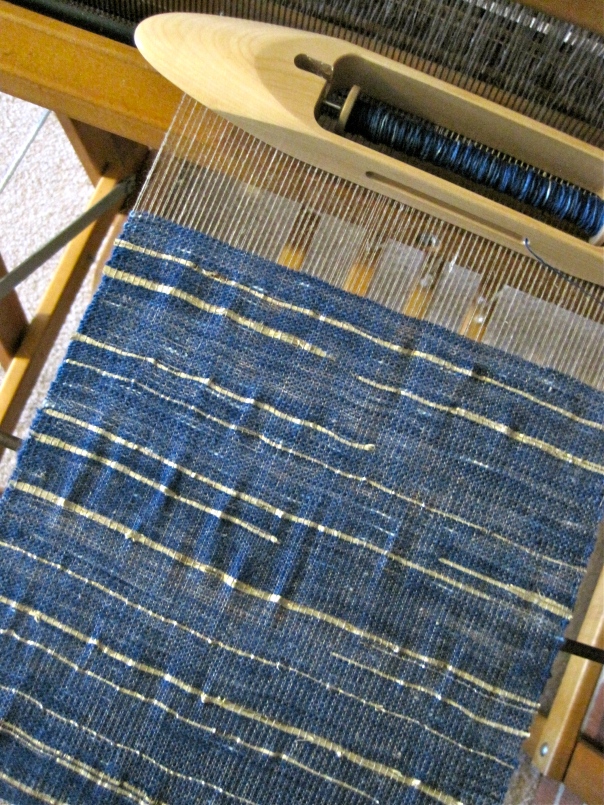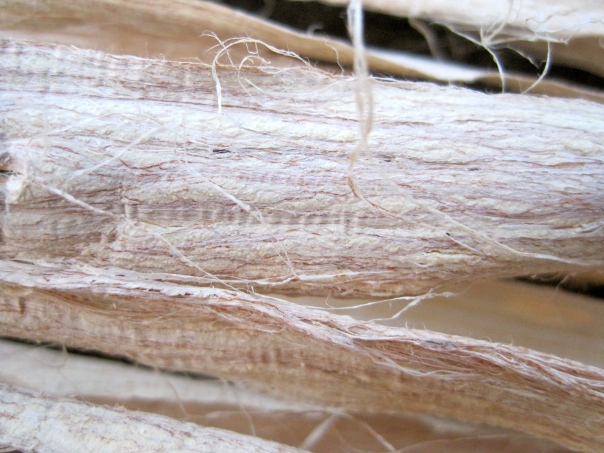It has been a while since I have posted on this blog. I have been busy sourcing antique and vintage fabrics and dyeing katazome textiles. I have also been working on a new website and blog. Please visit our new website for blog posts on antique Japanese textiles and my new indigo dye projects. We also have a shop where you can purchase fabrics and an experiences page where you can learn about upcoming classes and textile tours. Visit the new website at: www.nsomerstextiles.com
Category Archives: Bast fibers
Bashofu
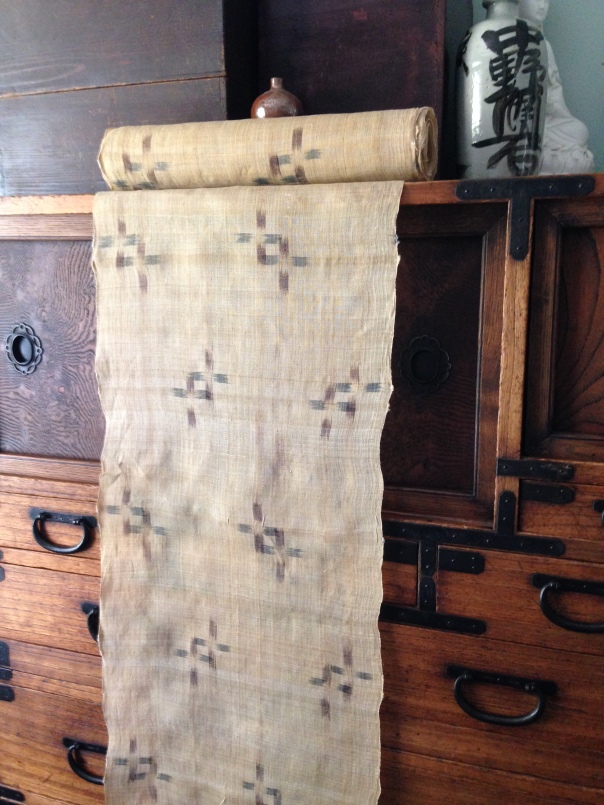
Bashofu is a fabric made in Okinawa from the inner fiber of the basho banana plant. The fabric is very hard to come by and I am very lucky to have been able to collect an unused bolt of Bashofu from the first half of the 20th century. The color is a beautiful golden gray and the ikat design of crosses has been beautifully worked. Bashofu is a very labor intensive fabric to produce and each thread is produced by gently knotting the strands of basho fiber resulting in a light textile with lots of texture.
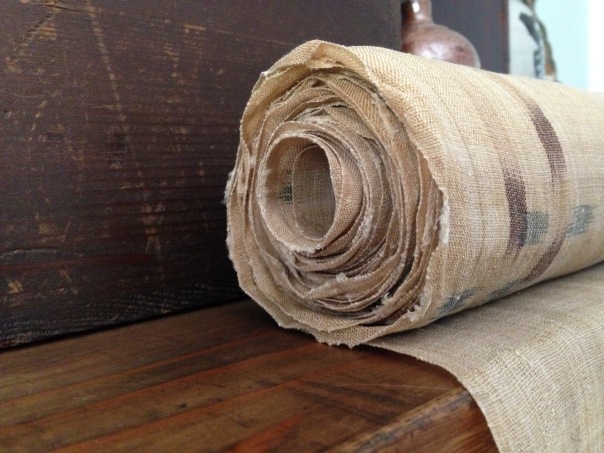
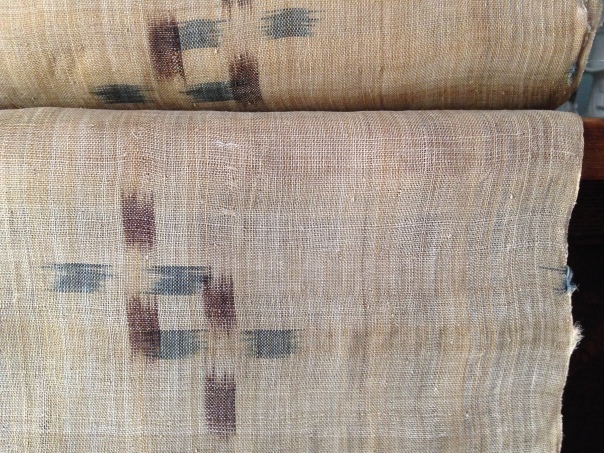
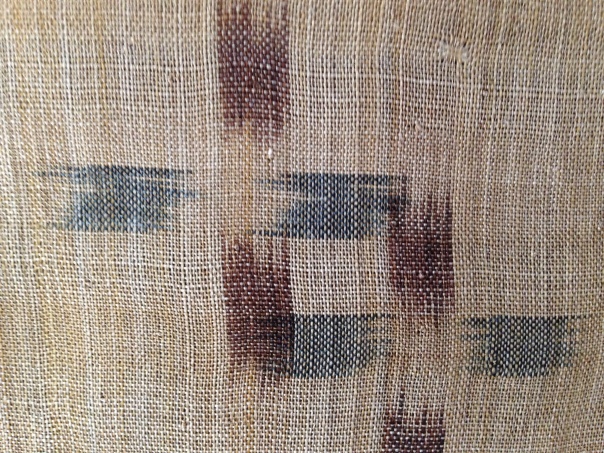
The fiber collected from the central rings of the basho plant must be boiled, scraped, dried, soaked, split, tied, and spun before dying or weaving can take place. Due to the delicate nature of this fiber these processes are all carried out by hand making Bashofu a highly valued textile. Here is a short video that includes the process of making Bashofu: https://youtu.be/Nve0PFa4og4
Kami-Ito, Paper Thread Making
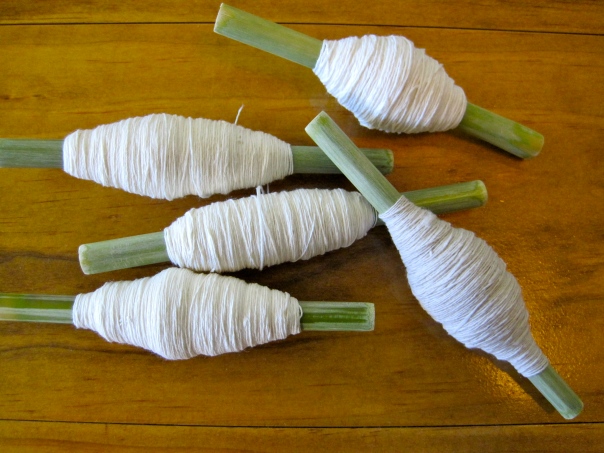
Newly spun kami-ito, paper thread, on homemade bamboo bobbins. I made this paper thread from beautiful hand made kozo paper from Korea. I first cut the kozo paper into thin strips leaving both ends attached, then left the paper strips under a damp towel overnight, in the morning I rolled the moist paper on concrete blocks, and then spun the thread using a Japanese spinning wheel. This thread still needs to be boiled or steamed to set the twist. This is my first real attempt at making paper thread.
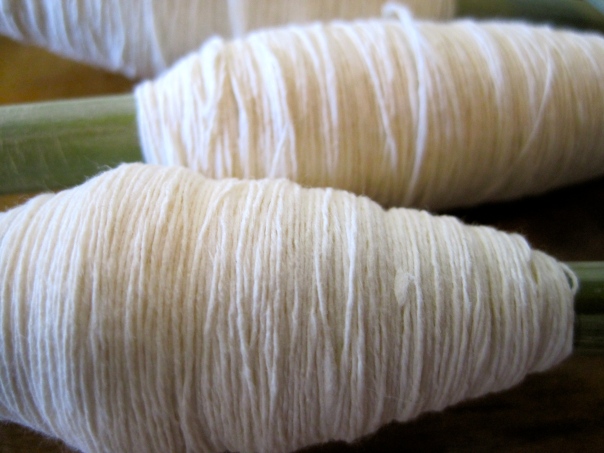



Vintage Japanese Hand Spliced Hemp Thread
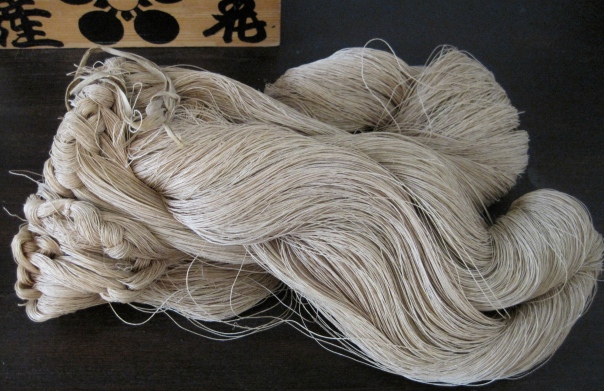

When this thread arrived from Japan there were small bits of newspaper from the 40’s or 50’s clinging to some of the threads. I assume they were packed away in a weavers workshop for many years. Everything about this thread makes me contemplate the extreme skill needed to produce such consistent and strong thread. The hemp was harvested, steamed, dried, boiled, the fibers were then separated and hand spliced. In the second photo you can see the joins where the spicing was done. After splicing a final twist was added using a spinning wheel. I have several hanks of this thread and I think I will use it for the warp of an upcoming project.
Reading About Kami-Ito and Shifu
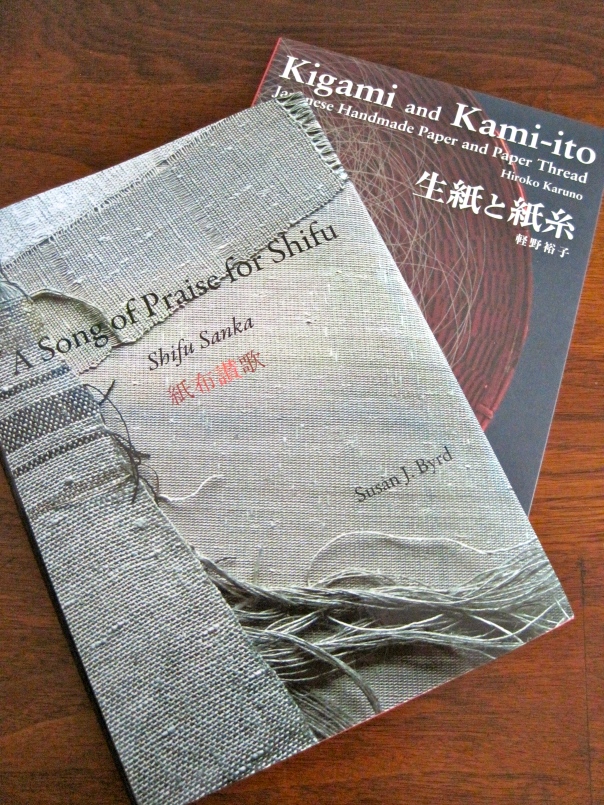
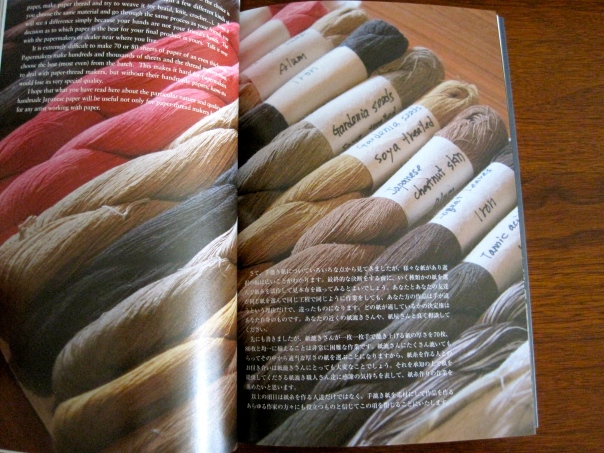
I recently found these two wonderful books on shifu, paper thread making and paper thread weaving. The first book Kigami and Kami-ito is beautifully laid out and the images are inspiring. A Song Of Praise For Shifu is exceptionally full of information about paper making, as well as, the regional variations and history of shifu.

I have been collecting antique daifukucho, or account books. Some of these daifukucho date to the 1840’s and were used by a lumber company, but most of them date to the 1880’s and 1890’s. In the past it was common for these books to be taken apart and the strong kozo paper cut up to make paper thread which would be used as weft threads on a hemp or cotton warp. I bought many of these thinking that I might try my hand at making shifu using antique paper, but each page is like a work of art and I don’t know if I can ever bring myself to use them. You can purchase late 19th century daifukucho through my shop at https://www.etsy.com/shop/luckyredbat?ref=hdr_shop_menu
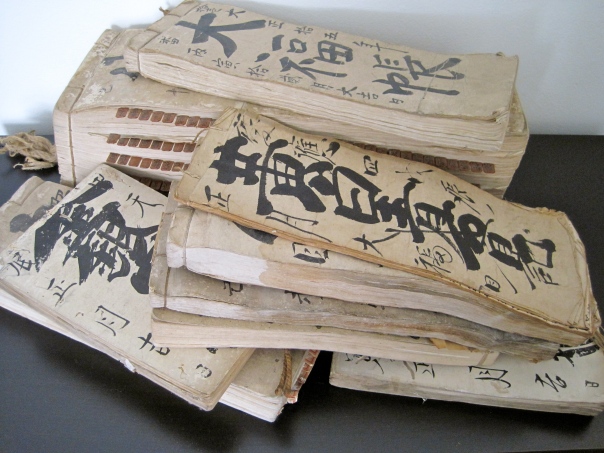

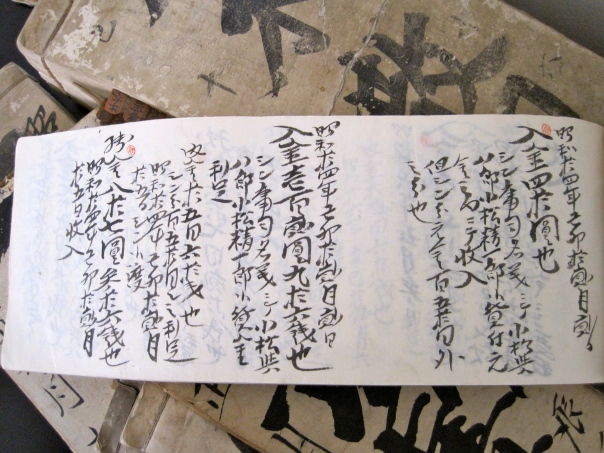

I recently ordered some beautiful hand made kozo paper and tried making kami-ito, paper thread using the books on kami-ito and shifu I mentioned above. I cut the kozo paper into thin strips leaving both ends attached, then I left the paper strips under a damp towel overnight, in the morning I rolled the moist paper on concrete blocks, and then spun the thread using a Japanese spinning wheel.



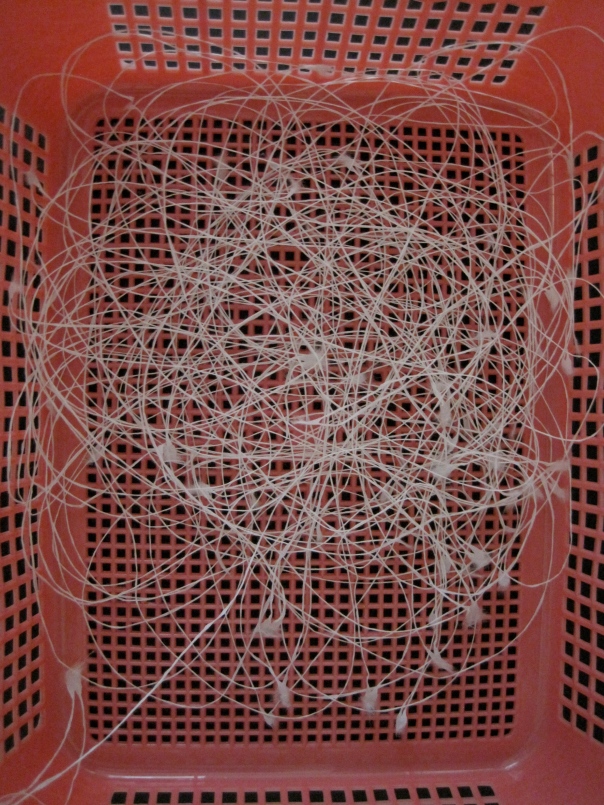
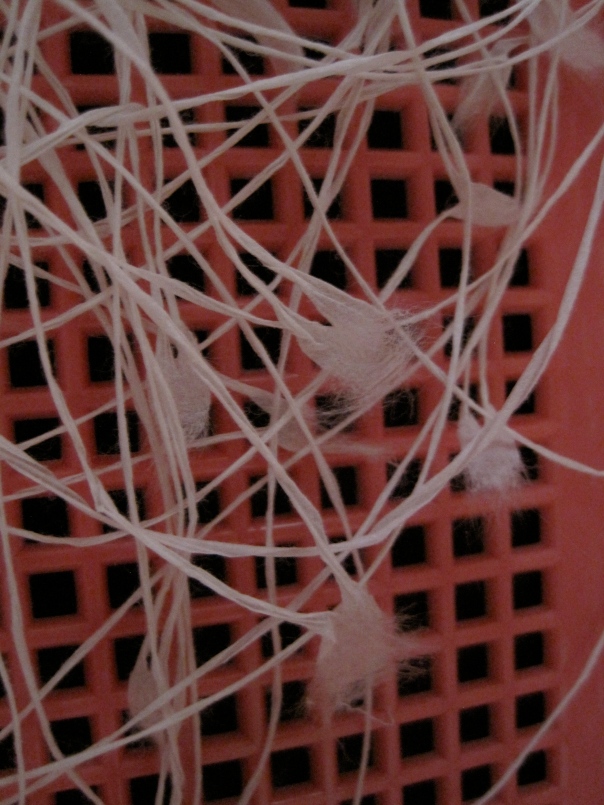


Antique Japanese Spinning Wheel
 I recently found this antique Japanese spinning wheel. I had to beg the owner to ship it to me in North Carolina. After tinkering with the spindle I love the way it spins.
I recently found this antique Japanese spinning wheel. I had to beg the owner to ship it to me in North Carolina. After tinkering with the spindle I love the way it spins.
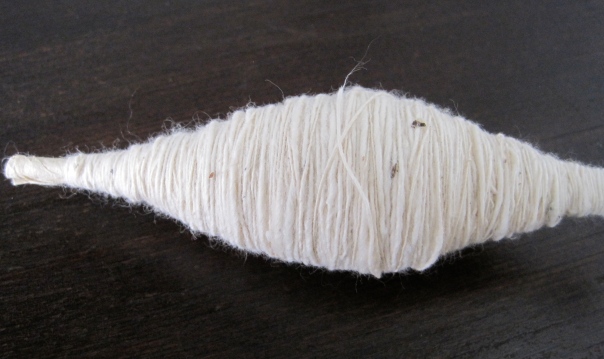
New Weaving Project: Cotton and Kudzu
Growing Ramie
This summer I planted a few ramie plants in the hopes of being able to harvest some ramie fiber next year. Ramie is a member of the nettle family and has been used throughout Asia to create a beautiful and strong fabric similar to linen or hemp. 
Here are some examples of ramie fabric from a small komebukuro. Komebukuro are small patchwork bags used for giving gifts of rice and beans to friends, family, or a temple. The fabric was woven using a double ikat technique and may have originated from the Ryukyu Islands located at the southern end of the Japanese archipelago. 

 Here is a short Japanese video about how ramie plants are processed into beautiful fabric. https://www.youtube.com/watch?v=QIGscKahEqY
Here is a short Japanese video about how ramie plants are processed into beautiful fabric. https://www.youtube.com/watch?v=QIGscKahEqY
Kudzu fiber
 Over the last month I have been trying to get better at taking fiber from kudzu vines. This was my last attempt and I’m pleased with the results. I gathered the vines from the forest floor where it was easy for me to find vines that were straight and were growing with almost no leaves. I boiled the vines for one hour and then allowed them to rot under a piece of old roofing tin for about 4 or 5 days before stripping the fiber from the vines and washing it with warm water and castile soap. The fiber is a very light golden color and the remaining bark is easily removed.
Over the last month I have been trying to get better at taking fiber from kudzu vines. This was my last attempt and I’m pleased with the results. I gathered the vines from the forest floor where it was easy for me to find vines that were straight and were growing with almost no leaves. I boiled the vines for one hour and then allowed them to rot under a piece of old roofing tin for about 4 or 5 days before stripping the fiber from the vines and washing it with warm water and castile soap. The fiber is a very light golden color and the remaining bark is easily removed.
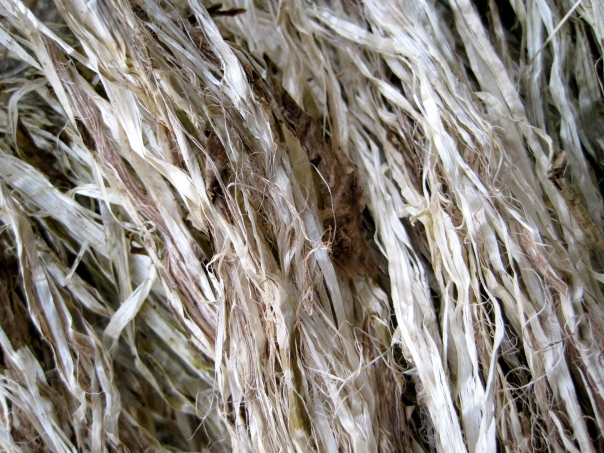

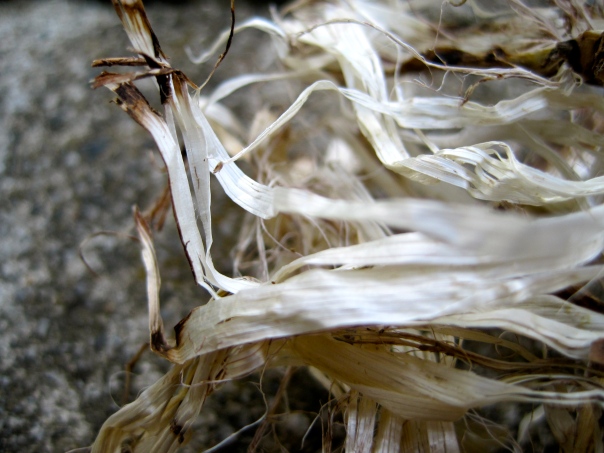 Kudzu fiber can be purchased from my web shop here: https://www.etsy.com/listing/204322779/raw-kudzu-kuzu-fiber?ref=shop_home_active_1
Kudzu fiber can be purchased from my web shop here: https://www.etsy.com/listing/204322779/raw-kudzu-kuzu-fiber?ref=shop_home_active_1








